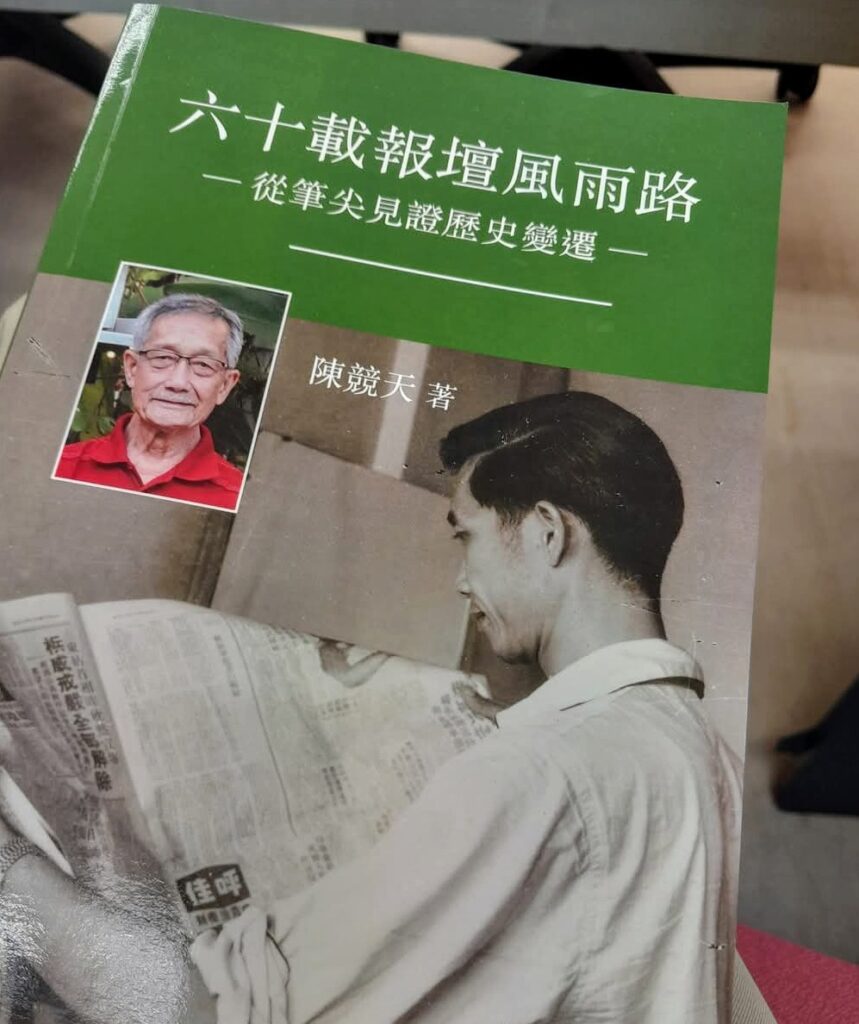By C C Pung
Justice of Peace

ATTENDING the recent launching of a book (photo by my long-time friend in journalism, Mr Chan Kang Yuen), has rekindled a long-held thought of mine on my recollection and take-aways about my decades of involvement in the field of communications,/journalism/newspaper management/corporate comm/advertising+++ that most of is just lumped under ‘media’.
Since I first dabbled in writing what were then called ‘situations report’ with the Ministry of Information in the beginning of the 70s, I’ve got my fingers in practically every form of the communications discipline or another at one time of another.
A rolling stone gathers no moss. I’ve been tumbling in and around the mossy environment, smelled the scents of good and foul, saw the fall of Tun Mustapha, the rise of Berjaya and how a certain pledge by a Dr Mahathir to ‘sink and swim’ with Berjaya resulted in events that harmed Sabah the last 40 years.
Do I qualify?
Deep in the mix was Parti Bersatu Sabah (PBS) that was identified as Kadazandusun-based and the flag-bearer of everything anti-Malaya.
PBS was acutely aware of Malaya’s (perhaps more accurate to say it was UMNO’s) very thinly-veiled scheme to ensure a muslim-dominated Malaysian electoral landscape.
Allegations were widespread of the notorious ‘Projek IC’ to grant citizenship to hundreds of thousands of immigrants, particularly the Suluks from southern Philippines who were fleeing civil wars in the Philippines.
Simultaneously, widespread state-funded and widely publicised conversion ceremonies took place frequently.
Dahwah centres mushroomed in KDM-densed districts.
Those converted were coincidentally the majority, the KDMs.
I personally covered some of these conversion ceremonies in Keningau, Kudat and Kundasang, where I witnessed some KDM natives, many of them not proficient in languages other than their native tongues, trying to recite the shahada.
I must admit that while in the midst of covering the many ‘colourful’ and consequential events, I was then not aware of the shenanigans of the Malayan powers that be.
It was only in later years when I began to understand the manovures, the intrigues and the less than holy intentions of those promoting the Malaysia Idea.
I also got a better understanding of how the Philippines’ territorial claim over Sabah and Indonesia’s ambition to expand its territories were portrayed to highlight the vulnerability of Sabah and the promised protection in a federation with Malaya, Singapore, Sarawak and Brunei.
I get emotional thinking about how the British schemed their decolonisation moves with the Malay powers in Malaya and lamented how Sabah’s lack of the wherewithal of politics and sophistication in those days was being taken advantage of.
I am aware that I may know much, but there’s much more that you need to know.
Perhaps this professional caution was the main inhibitor to my desire to write my story.
And I haven’t even begun to think how to tie my years in communication to the stagnant in the Sabah media landscape, or speculate how my journalistic ignorance and gullibility in the early unenlightened years may have contributed to the lethargy, lacklustre and subservience in the media today.
Many thoughts and difficulties in determining a theme.
It’ll come.



